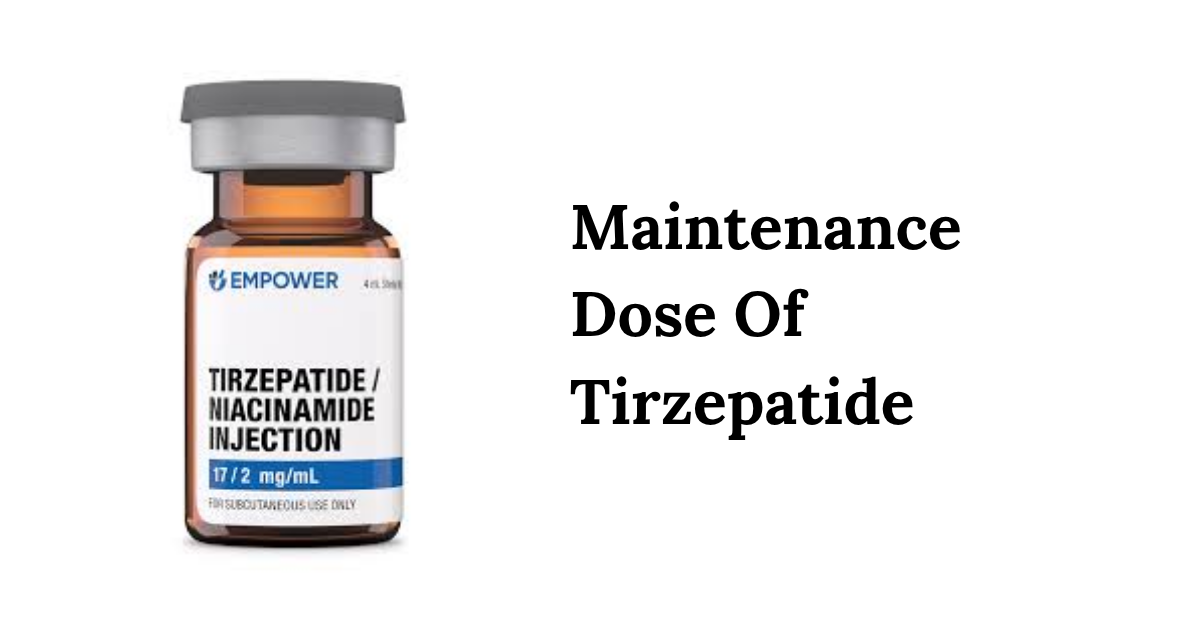The maintenance dose of Tirzepatide is typically 10 mg once weekly, but it may vary based on individual patient needs and responses.
Understanding Tirzepatide
Tirzepatide is a novel medication that has garnered significant attention for its role in managing type 2 diabetes. Developed by Eli Lilly, it works as a dual agonist for the glucose-dependent insulinotropic polypeptide (GIP) and glucagon-like peptide-1 (GLP-1) receptors. By targeting these pathways, Tirzepatide not only helps in lowering blood sugar levels but also aids in weight management, making it a compelling option for many patients.
The mechanism of action involves stimulating insulin secretion when glucose levels are high while simultaneously suppressing glucagon release. This dual action helps to improve glycemic control effectively. Additionally, the weight loss associated with Tirzepatide can be attributed to its effects on appetite regulation and energy expenditure.
Indications for Use
Tirzepatide is primarily indicated for adults with type 2 diabetes who are looking to achieve better glycemic control. It is particularly beneficial for those who have not achieved adequate control with diet and exercise alone or those who may require additional medication to help manage their condition.
It can also be considered in patients who are overweight or obese, as it has shown significant effects on weight reduction. The dual action of Tirzepatide makes it an attractive option for both blood sugar management and weight loss, addressing two critical aspects of type 2 diabetes care.
Clinical Trials and Efficacy
The effectiveness of Tirzepatide has been demonstrated in several clinical trials. In the SURPASS series of studies, participants receiving Tirzepatide experienced substantial reductions in HbA1c levels compared to those on placebo or other diabetes medications. The results showed that higher doses led to more significant improvements in glycemic control.
Moreover, participants also reported notable weight loss, with some studies indicating an average reduction of around 10-15% of body weight over a year of treatment. These outcomes highlight Tirzepatide’s potential as a comprehensive treatment option for managing type 2 diabetes effectively.
Dosing Guidelines
Tirzepatide is administered via subcutaneous injection. The initial dose is usually set at 2.5 mg once weekly, allowing the body to adjust to the medication. After four weeks, the dose can be increased to 5 mg if needed. Depending on individual response and tolerability, healthcare providers may further escalate the dose to 7.5 mg or even up to 10 mg weekly.
Here’s a quick overview of the dosing schedule:
| Week | Dose (mg) |
|---|---|
| 1 | 2.5 |
| 4 | 5 |
| 8 | 7.5 |
| 12+ | 10 (maximum) |
It’s essential for patients to follow their healthcare provider’s recommendations closely and not adjust their dosage without professional guidance.
Maintenance Dose Of Tirzepatide
Once stabilized on an effective dose, many patients transition to what is known as the maintenance dose of Tirzepatide. This is typically set at 10 mg once weekly but can vary based on individual patient needs and therapeutic response.
The maintenance phase aims to sustain optimal blood glucose levels while minimizing side effects. Regular follow-ups are crucial during this phase to monitor efficacy and adjust doses if necessary.
Monitoring and Side Effects
As with any medication, monitoring is vital when using Tirzepatide. Patients should have regular check-ups to assess their blood sugar levels, HbA1c readings, and weight changes. Side effects can occur; common ones include gastrointestinal issues such as nausea, vomiting, diarrhea, or constipation.
Most side effects are mild and tend to diminish over time as the body adjusts to the medication. However, more severe side effects may include pancreatitis or kidney issues; hence patients should be educated about symptoms that warrant immediate medical attention.
The Role of Lifestyle Changes
While medications like Tirzepatide play a crucial role in managing type 2 diabetes, lifestyle changes remain fundamental components of effective diabetes management. Patients are encouraged to adopt healthier eating habits and engage in regular physical activity alongside their medication regimen.
Dietary modifications focusing on whole foods—fruits, vegetables, lean proteins—and reducing processed sugars can significantly impact overall health outcomes. Regular exercise enhances insulin sensitivity and helps maintain a healthy weight, further supporting the efficacy of medications like Tirzepatide.
Combining Treatments for Optimal Results
In some cases, healthcare providers may recommend combining Tirzepatide with other diabetes medications such as metformin or SGLT-2 inhibitors for improved outcomes. This strategy allows for a multi-faceted approach that targets different mechanisms involved in glucose metabolism.
Combining treatments should always be done under medical supervision to ensure safety and effectiveness while minimizing potential drug interactions or side effects.
Patient Education and Support
Education plays a critical role in successful diabetes management with Tirzepatide. Patients should receive comprehensive information about their condition, treatment goals, potential side effects, and lifestyle modifications needed for success.
Support groups or counseling can also provide emotional support during this journey since managing chronic conditions like diabetes often comes with psychological challenges as well.
Key Takeaways: Maintenance Dose Of Tirzepatide
➤ Typical Maintenance Dose: The standard dose is 10 mg once weekly. ➤ Individual Variability: Dosing may vary based on patient needs and responses. ➤ Monitoring Importance: Regular check-ups are essential to track efficacy and side effects. ➤ Lifestyle Changes Matter: Healthy eating and exercise enhance Tirzepatide’s effectiveness. ➤ Patient Education Crucial:Patient Education Crucial:
